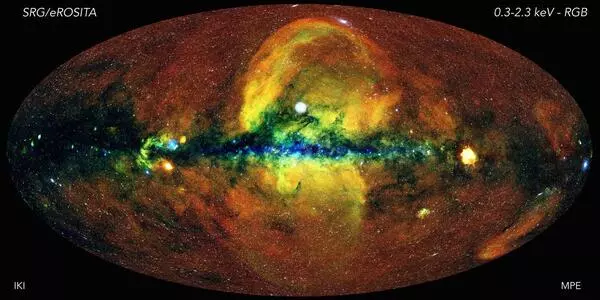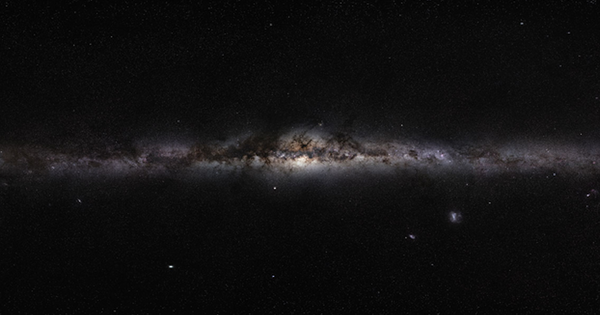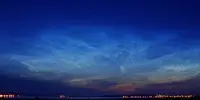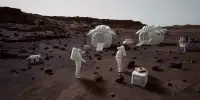An animated journey into the dusty Milky Way depicts the contours of our galaxy taking shape as we stare out further and further from Earth. The video displays the steady accumulation of dust from Earth’s neighborhood to nearly 13000 lightyears towards the galactic center, or roughly 10% of the total distance across the Milky Way. Nearby, dust is everywhere, but farther away, it is possible to observe how concentrated it is along the galactic plane. In addition, two “windows” are depicted, one above and one below the galactic plane.
Astronomers produced an animation to model dust in the Milky Way using fresh data from an interactive application that uses data from the European Space Agency’s Gaia mission and other space science data sets. The work was presented this week at the National Astronomy Meeting at the University of Warwick.
The animation shows the cumulative build-up of dust looking from Earth’s local neighbourhood to ~13000 lightyears towards the galactic centre — around 10% of the overall distance across the Milky Way. Close by, dust swirls all around but, further out, the concentration of dust along the galactic plane becomes clear. Two ‘windows’, one above and one below the galactic plane, are also revealed.
We need tools like the ones we are developing for EXPLORE to support scientific discovery, such as by helping us to characterize properties within the data or to pick out the most interesting or unusual features and structures.
Nick Cox
“Dust clouds are associated to star formation and death, so their distribution tells a tale about how structures arose in the galaxy and how the galaxy evolves,” said Nick Cox, project coordinator for the EXPLORE project that is developing the tools. “The maps are particularly useful for cosmologists in revealing locations where there is no dust and we can have a clear, unimpeded view out of the Milky Way to investigate the Universe beyond, such as with Hubble or the new James Webb Space Telescope.”
“We need tools like the ones we are developing for EXPLORE to support scientific discovery, such as by helping us to characterize properties within the data or to pick out the most interesting or unusual features and structures.”

The methods used to generate the animation combine data from the Gaia mission and the 2MASS All Sky Survey. The tools are part of a package of programs created with financing from the European Union’s Horizon 2020 Programme to facilitate research of stars and galaxies, as well as lunar exploration.
Researchers used technologies from a package of software meant to facilitate studies of stars and galaxies as well as lunar exploration to generate this animation. These programs incorporate data from the Gaia mission and the 2MASS All Sky Survey.
“State-of-the-art machine learning and visual analytics have the potential to dramatically improve scientific return and discovery for space science missions,” stated Albert Zijlstra of the University of Manchester and the EXPLORE project.
“With a steady influx of new data, such as the latest third release of Gaia data in June 2022, we have a rising abundance of knowledge to mine that is beyond the scope of what humans can handle in a lifetime. We require tools like the ones we are developing for EXPLORE to aid scientific discovery, such as assisting us in characterizing qualities within data or identifying the most fascinating or uncommon features and structures.”















